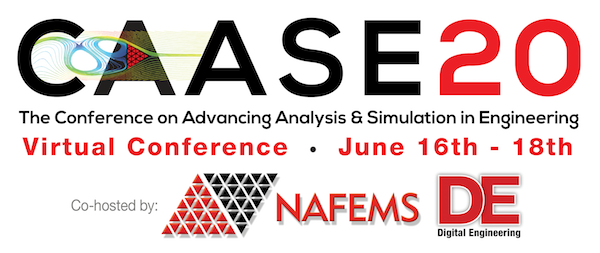
Latest News
May 19, 2020
The world is a very different place today, compared to even just a few short weeks ago. We’re all working hard to get our jobs and ourselves to a new normal standard of operations. But within today’s trying-to-keep-the-ship-afloat crisis mode, there is a huge opportunity to move to a new and better way of working. The patterns and work processes we relied on for decades may not serve us when we can’t get to the office or lab or factory floor. Now may be the perfect time to rethink old practices and redesign them to be more flexible and adaptable. Virtual everything? Maybe, maybe not — It’s up to us to create work processes that leverage technologies that didn’t exist when our old methods were first defined, and that we might not have been taking advantage of a few months ago.
Engineering in the cloud has always been problematic. Some companies aren’t (weren’t?) ready for the potential risk inherent in letting key intellectual property go outside the firewall — but is that risk any higher than a bad or clueless actor who charges an infected cell phone via a data-carrying USB cable? Others were unconvinced about latency, save rates, and other technical issues. Those issues are rapidly being addressed, depending on the vendor and solution type, and it’s time to move forward where cloud design makes sense.
One thing this sheltering in place has shown us all is that we weren’t ready: yes, there are CAD-in-the-cloud apps, but our parts and assemblies were stuck on servers behind firewalls. We could do CAD but not on work-in-progress parts because we couldn’t get to the parts we needed. Until someone fixed that for us, working on existing designs was impossible, even with a second license to use CAD at home, or access to virtualized CAD or CAD in a browser. And don’t even get started with underpowered home PCs (or Macs) running commercial CAD. It turns out that our most significant issues with engineering in the cloud weren’t the technical issues we thought they were; they were process issues.

What about simulation? It’s always been accepting of remote resources, since many jobs were already running in a cluster, grid, HPC center, super-computer or whatever infrastructure was available, regardless of where it was physically located. The opportunity now is so much bigger than “simulate in the cloud”, and we need to take advantage before it slips away.
Design processes that relied upon up old-school simulation, replacing a bend-and-break test with a simulation just before release to production, only solved part of the problem. Simulation all along the design process, to explore concepts before settling on a few for refinement leads to more innovative designs. Exploring a few concepts in greater detail can mean early rejection of ideas that shouldn’t make it to downstream stages, saving time and resources. And, yes, a final bend-and-break simulation will ensure that a design is, ultimately, meeting its design objectives.
To effectively do this, however, is disruptive for many organizations. It may mean changing job definitions, giving designers more tools and training, and having methods engineers define parameters and processes for others to follow. But it also means changing the value places on simulation within an enterprise.
When I first started exploring the CAE world, the accepted norm was that “no one trusts the simulation except the person who ran it, everyone trusts the measurement except for the person who made it”. Expertise and an understanding of the shortcomings of each method meant that there was distrust between the disciplines. Fast forward to today, and test and simulation often work hand-in-hand, with CAE telling the tester what to focus on and test giving CAE relevant data on materials, initial conditions, and much more.
This year’s Conference on Advancing Analysis & Simulation in Engineering (CAASE20) virtual event (June 16-18) will dive into these topics with new urgency. I’ll be giving a presentation titled “Simulation in the Modern Enterprise”, where we’ll cover how to organize processes to take advantage of new technologies and ways of working. We’ll look at how to manage simulation processes when we have newbies and experts collaborating on designs, the interaction of test and CAE, and how important governance is to make sure simulation is used to its full potential.
Join us! Online, from the comfort and safety of your home or office.
Monica Schnitger is president of Schnitger Corporation (schnitgercorp.com). You can read more about Monica Schnitger’s CAASE20 Keynote here and register for the CAASE20 conference here.
Subscribe to our FREE magazine, FREE email newsletters or both!
Latest News
About the Author
Monica Schnitger is the founder, president and principal analyst of Schnitger Corporation. She has developed industry forecasts, market models and market statistics for the CAD/CAM,CAE, PLM, GIS, infrastructure and architectural / engineering / construction and plant design software markets since 1999.
Follow DE





